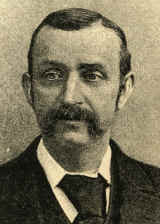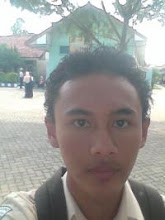Saturday 27 June 2009
HISTORY OF SYNCHRONIZED
Pool is a beautiful one branch exhibitions since 1952 Helsinki Olympic Games, but new start dipertandingkan Olympics since Los Angeles in 1984. Beautiful pool macth in the world championship and an Olympic pool is not open to the beautiful men. USA Synchro and Synchro Canada is the national championship in the U.S. and Canada to receive the male participants.
Athletes beautiful pool has demanded physical strength, kelenturan body, and a high aerobic ability in the movement of become synchronization. Before the jury, beautiful swimmer doing two sets of movements that must consist of technical movement and free movement.
Beautiful pool set up the International Swimming Federation (Fina). In Indonesia, the beautiful pool is under the auspices of the Pool Indonesia (PRSI), and matched National Pool Championship at the Indah Age Group and National Sports Week. Beautiful pool, among others, also in the Championship Pool
HISTORY OF KONI
o Top sports organizations formed the Sports of the Republic of Indonesia (pore) in the Solo Chairman Widodo Sosrodiningrat.
* 1947
o Organization established sports Olympiade Committee of the Republic of Indonesia (Kori) with the Chairman of Sri Sultan Hamengkubuwono IX.
o changes to Kori Olympic Committee of Indonesia (Koi).
* 1951
o pore melt into Koi.
* 1952
Koi o received a member of the International Olympic Committee (IOC) on 11 March.
* 1959
o The Government formed the Council of Asian Games Indonesia (DAGI) to prepare for the Asian Games organizing IV in 1962, as the body Koi parlormaid DAGI in international relations.
* 1961
o The Government formed the Committee Sports Movement (KOGOR) to prepare for the establishment of the Indonesian national team, top sports organizations as the technical branch of the sport.
* 1962
o membentu Government Department of Sports (Depora) with the minister Maladi.
* 1964
o The Government formed the Council of Sports of the Republic of Indonesia (Dori), all organizations KOGOR, Koi, top sports organizations in dilebur to Dori.
* 1965
o Joint Secretariat-top Top Sports Organization Branch was formed on December 25, proposes to replace Dori become Indonesian National Sports Committee (koni) an independent and free from political influence.
* 1966
o President Soekarno issued a Presidential Decree No. 143 A and 156 A Year 1966 on the establishment of koni Dori instead, but it can not work because it is not supported by the parent organization concerning sporting political situation at that time.
o President Soeharto Depora dissolve and form the Directorate General of Sports under the Ministry of Education and Culture.
o Parent organization formed koni sports on 31 December with the Chairman of the General Sri Sultan Hamengkubuwono IX.
Koi o diketuai by Sri Paku Alam VIII.
* 1967
o President Soeharto koni reinforces the Presidential Decree Number 57 Year 1967.
o Sri Paku Alam VIII resign as Chairman of the Koi. Position Head of Koi and dirangkap koni General by the Chairman of Sri Sultan Hamengkubuwono IX, the Secretary-General (Secretary General) koni MF Siregar and Secretary Koi Soeworo.
o Soeworo died, his Secretary by Secretary-General Koi dirangkap koni MF Siregar. Since then in AD / ART koni Musyawarah agreed in National Sports (Musornas), koni sekeping like currency to the two sides in the running of its duties as the koni and outside are as Koi. IOC later admitted as koni NOC Indonesia.
* 2005
o The Government and the House of Representatives issued Law No. 3 Year 2005 About the National Sport System and split into koni Kon and Koi.
* 2007
o Government issued Government Regulation Number 16, 17, and 18 in 2007 as the implementing regulations of Law. 3, 2005.
o koni Musornas hold Extraordinary (Musornaslub) on July 30 that form the Olympic Committee of Indonesia (Koi) and submit as a function of NOC Indonesia koni back to the Koi. Name koni still maintained and not changed to Kon.
HISTORY OF WATER POLO
The history of water polo as a team sport began as a demonstration of strength and swimming skill in late 19th century England and Scotland, where water sports and racing exhibitions were a feature of county fairs and festivals.[11][12] Men's water polo was the among the first team sports introduced at the modern Olympic games in 1900. Water polo is now popular in many countries around the world, notably Europe (particularly in Hungary, Greece, Italy, Russia, Croatia, Serbia, Montenegro), the United States, Canada and Australia. The present-day game involves teams of seven players (plus up to six substitutes), with a water polo ball similar in size to a soccer ball but constructed of waterproof nylon.
The rules of water polo were originally developed in the late nineteenth century in Great Britain by William Wilson. The modern game originated as a form of rugby football played in rivers and lakes in England and Scotland with a ball constructed of Indian rubber. This "water rugby" came to be called "water polo" based on the English pronunciation of the Balti word for ball, pulu.[13][14] Early play allowed brute strength, wrestling and holding opposing players underwater to recover the ball; the goalie stood outside the playing area and defended the goal by jumping in on any opponent attempting to score by placing the ball on the deck.
Men's water polo at the Olympics was the first team sport introduced at the 1900 games, along with cricket, rugby, football, polo (with horses), rowing and tug of war.[15] Women's water polo became an Olympic sport at the 2000 Sydney Olympic Games after political protests from the Australian women's team.
Every 2 to 4 years since 1973, a men's Water Polo World Championship is organized within the FINA World Aquatics Championships. Women's water polo was added in 1986. A second tournament series, the FINA Water Polo World Cup, has been held every other year since 1979. In 2002, FINA organized the sport's first international league, the FINA Water Polo World League.
HISTORY OF RAFTING
Finally on the 19th century a scout named John Macgregor develop this vehicle for water recreation and sports. Time of growing, people will be interested in the beauty and the river environment and continue to develop this activity. Materials are also developing this boat to the plastic, aluminum, fiberglass and rubber.
Then people start thinking how to cross the river with a vehicle that can accommodate more passengers and supplies. After world war II over, the boat belonging to United States navy is used to start the rivers. But this boat is designed to run into the sea waves, not to the cascade. Rafting is done by using the boat rounded the so-called "Basket Boat" because of similar baskets. This boat is always full of water even with the past only a small cascade. Until now this type of boat still used on the river that easy.
Until 1983, the cascade rafter not have any choice other than draw water out after the boat passes cascade. The cascade rafter often "bad dream" when the loss must be "alias pail bucket" to bail out the boat.
After some kind of boat to try, in 1983 the boat can remove the water itself is called "Self Bailer" successfully produced by Jim Cassady.The key success of this boat is the floor of the boat must be the wind.Floor contains the air this will always float above the water surface so that the water itself out through the hole around the boat floor.
Our country that almost most of the water is not surprising since the first epoch of the nation we are pengarungan river. For example, on the island of Kalimantan Dayak tribes has long been the Mahakam river in the boat or the Kapuas river craft, which is also made from trees that dilubangi, as well as rural tribes in Irian, who lived around the river Mamberamo. And other tribes in this archipelago.
While activities have current rafting with the swift boat rubber that is recorded in history when major tourist held Race Citarum River that held by the group of mountain climber and facer jungle Wanadri, Bandung, which also received support from our navy.
Moment this can be said as a point of departure from the development of white water rafting on the American. Clubs such as the nature lovers and Wanadri Mapala the UI and make a series of expeditions. In addition to using rubber boats this activity also has been developed using a kayak and Canoe.
The first international expedition in the field of white water rafting is done by the club Aranyacala Trisakti through the rivers of California, Oregon and Idaho, USA in 1992.
See a very rapid development of this activity in the 90's era, start bebrapa energizer require a vessel of communication for the energizer rafting in Indonesia. On 29 March 1996, major tourist attractions stand Federation Australia, the 30 clubs by dibidani rafting both commercial and amateur. This is a point of departure to the development of the new order in the world of white water rafting Indonesia
HISTORY OF SWIM
Saturday 6 June 2009
About AQ
I was born in mojokerto at August,20 1993.
I study in SMAN 1 Sooko Mojokerto.

